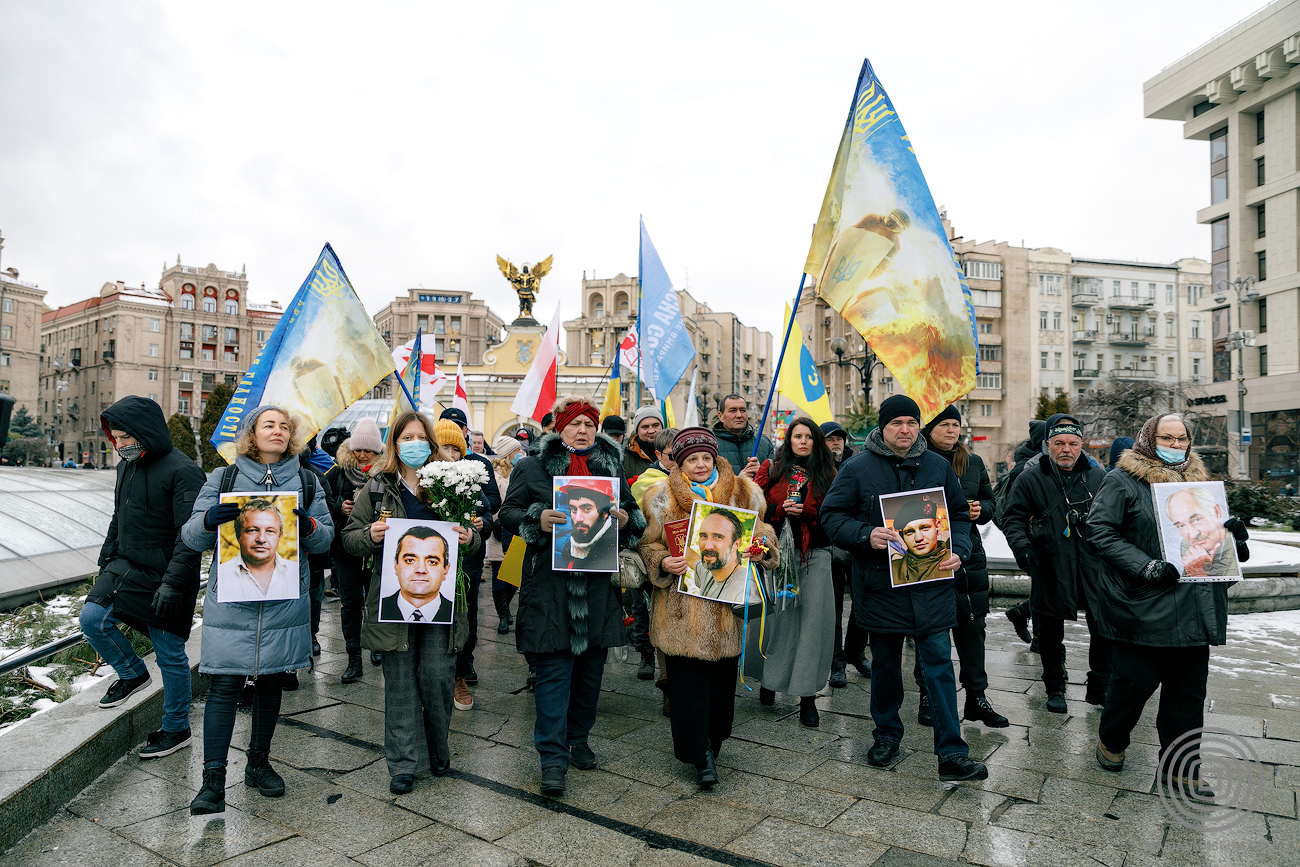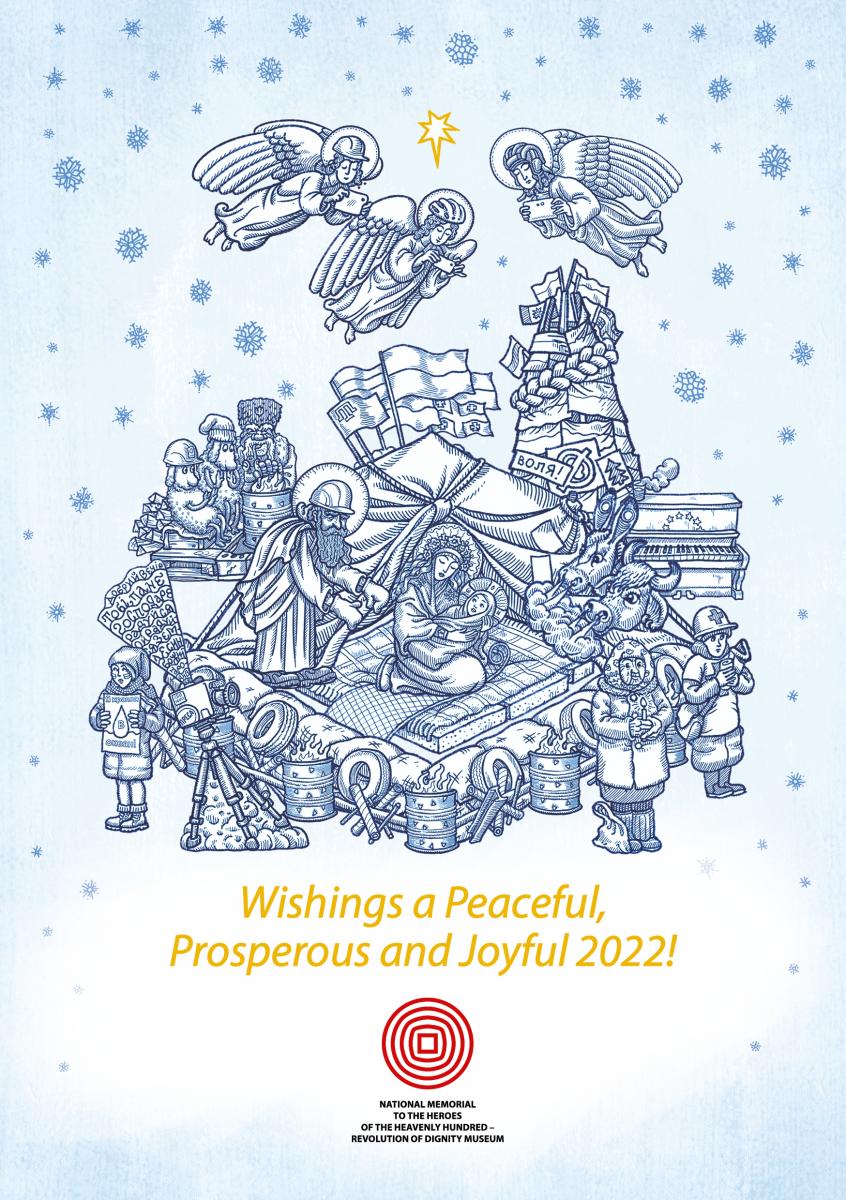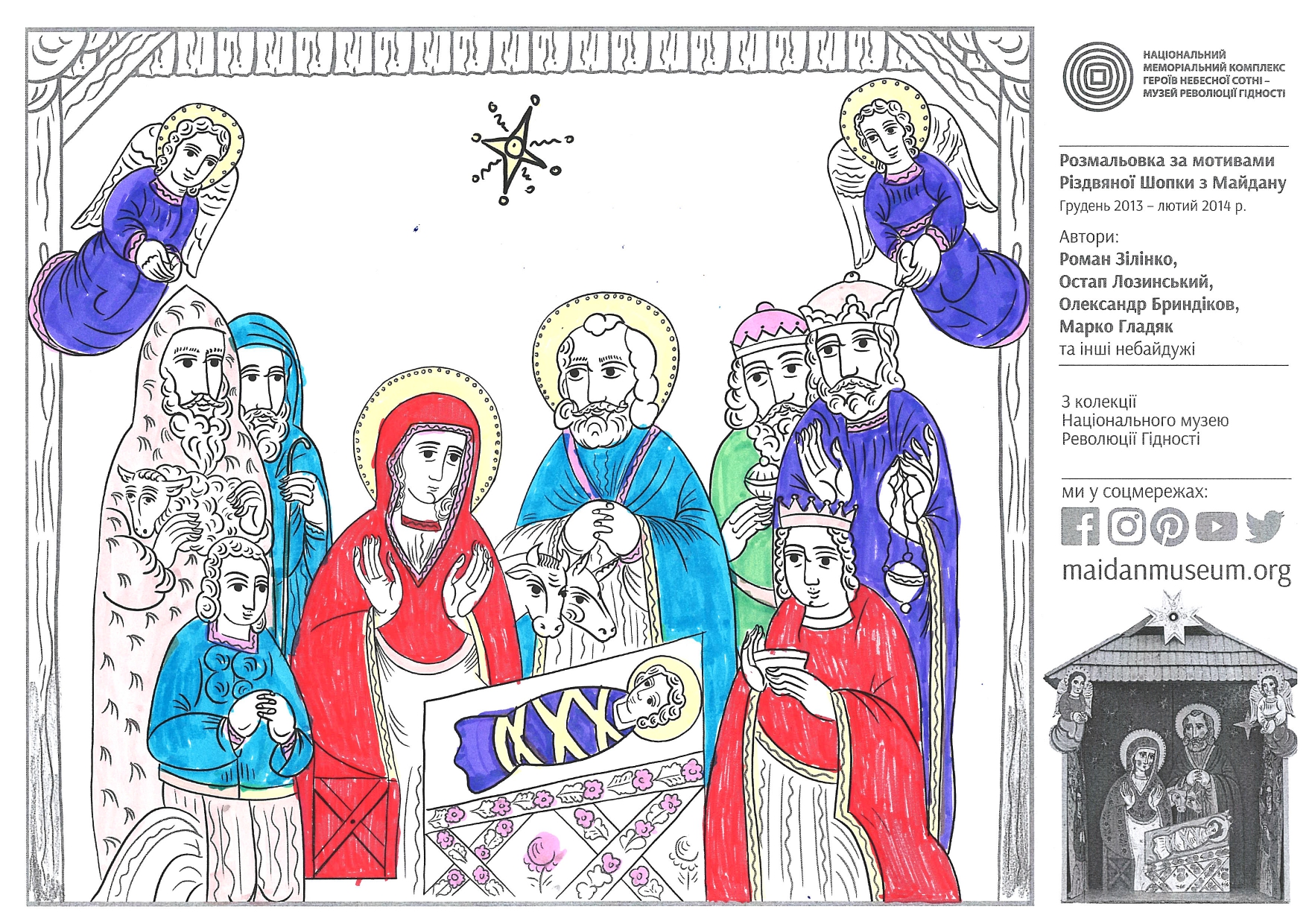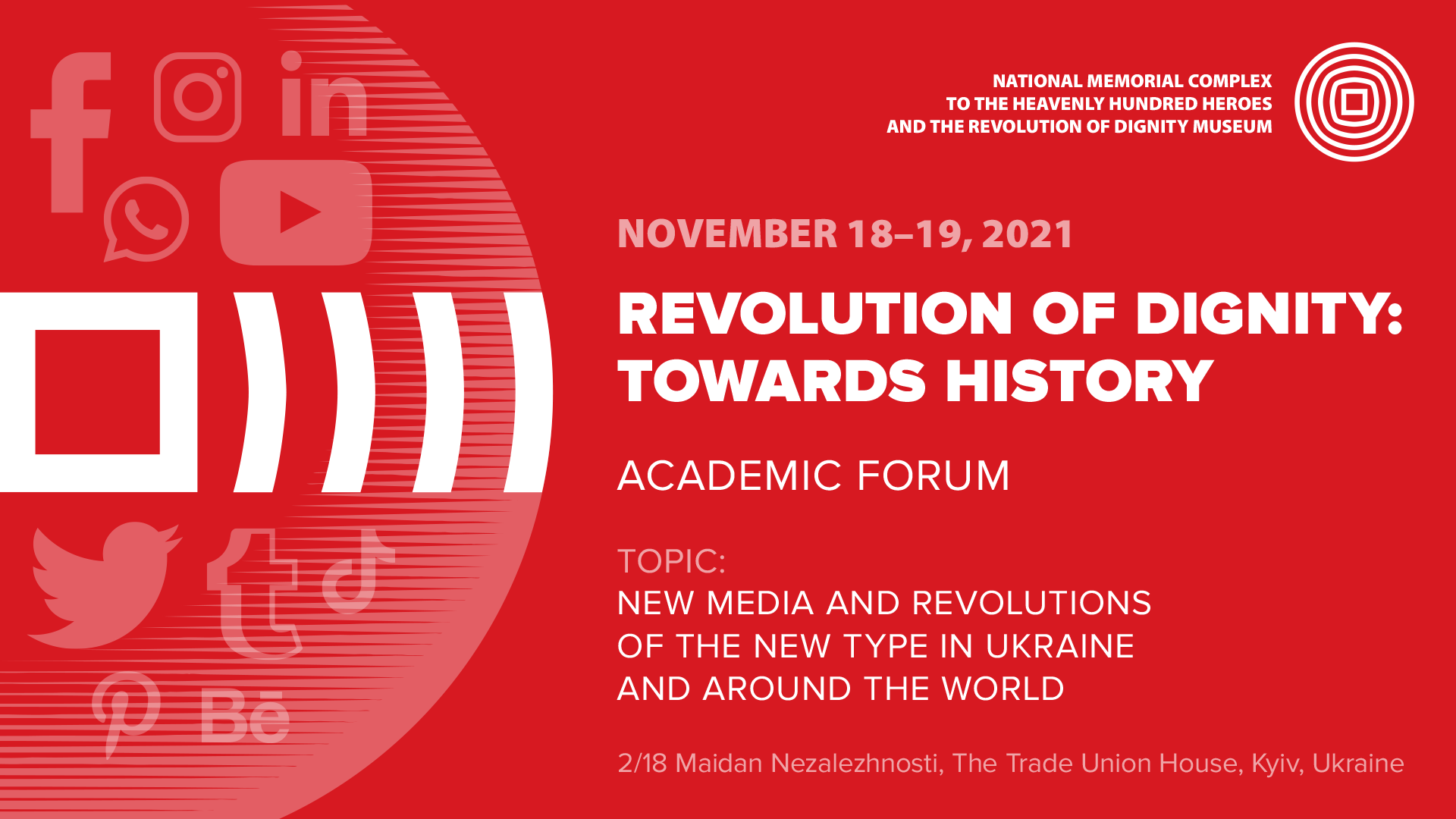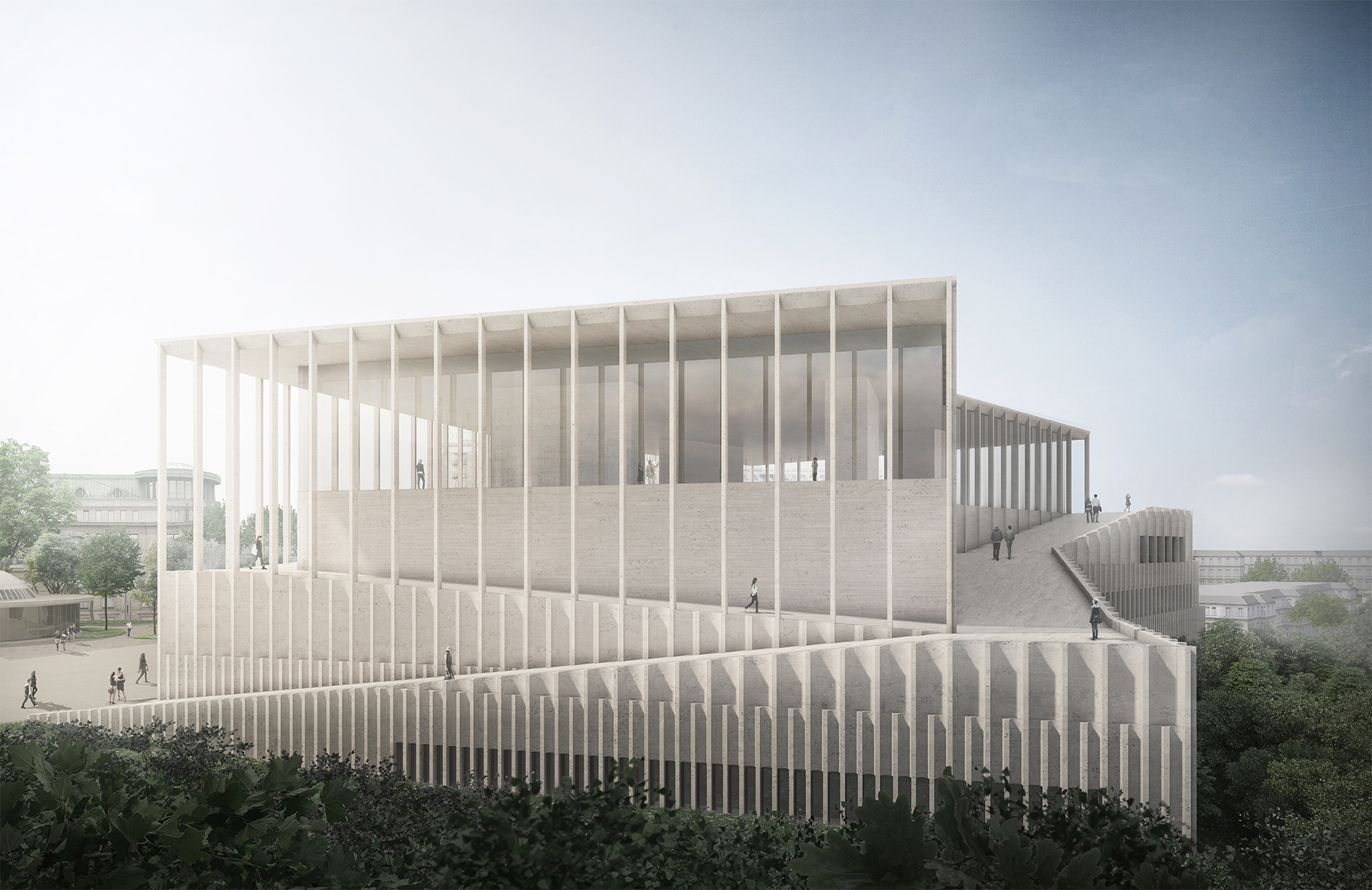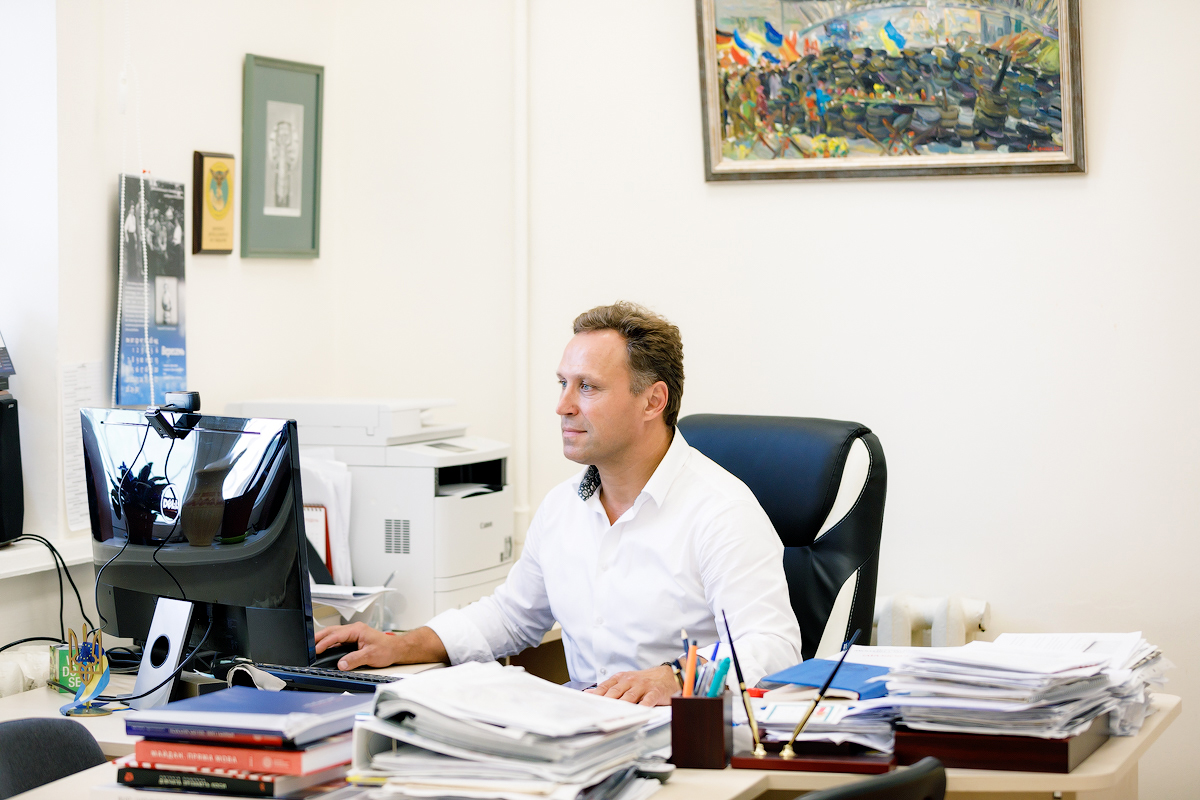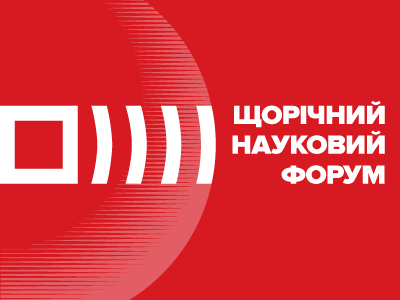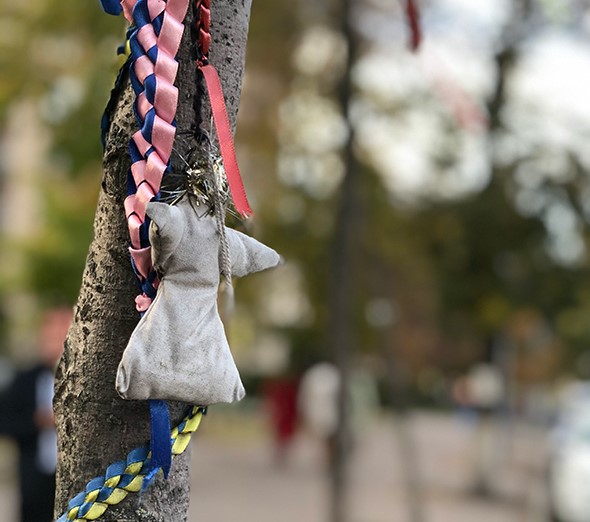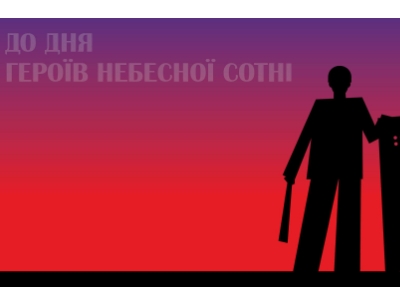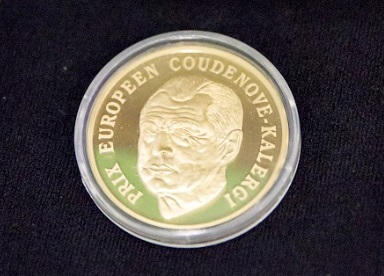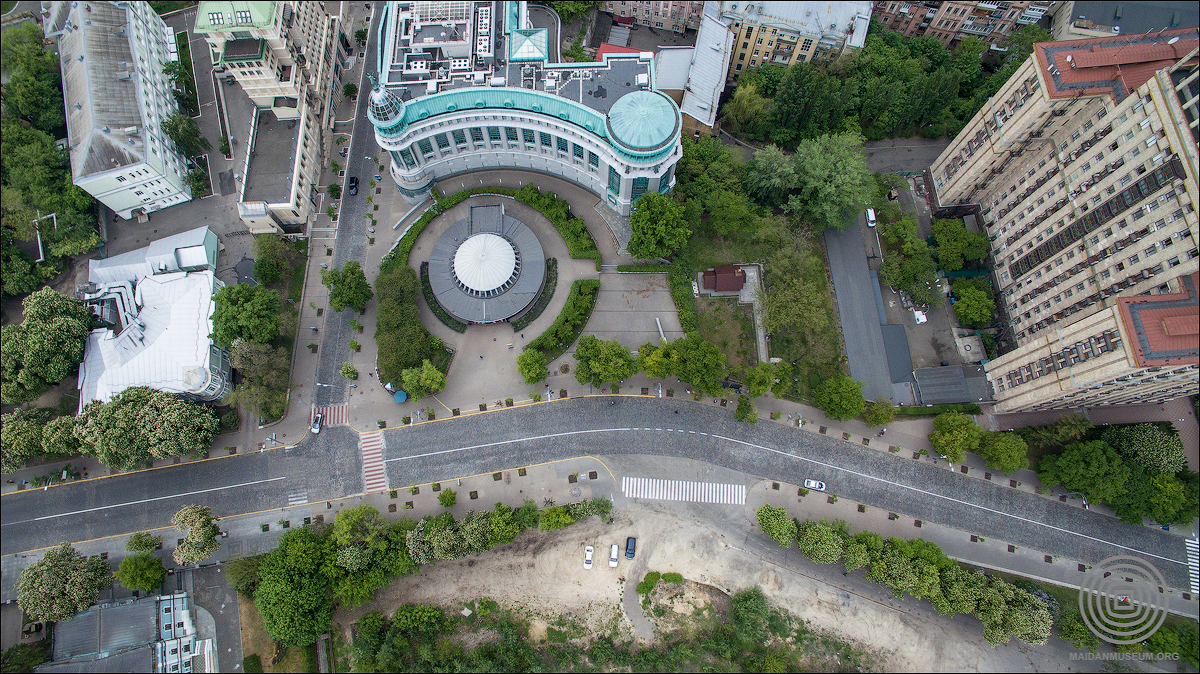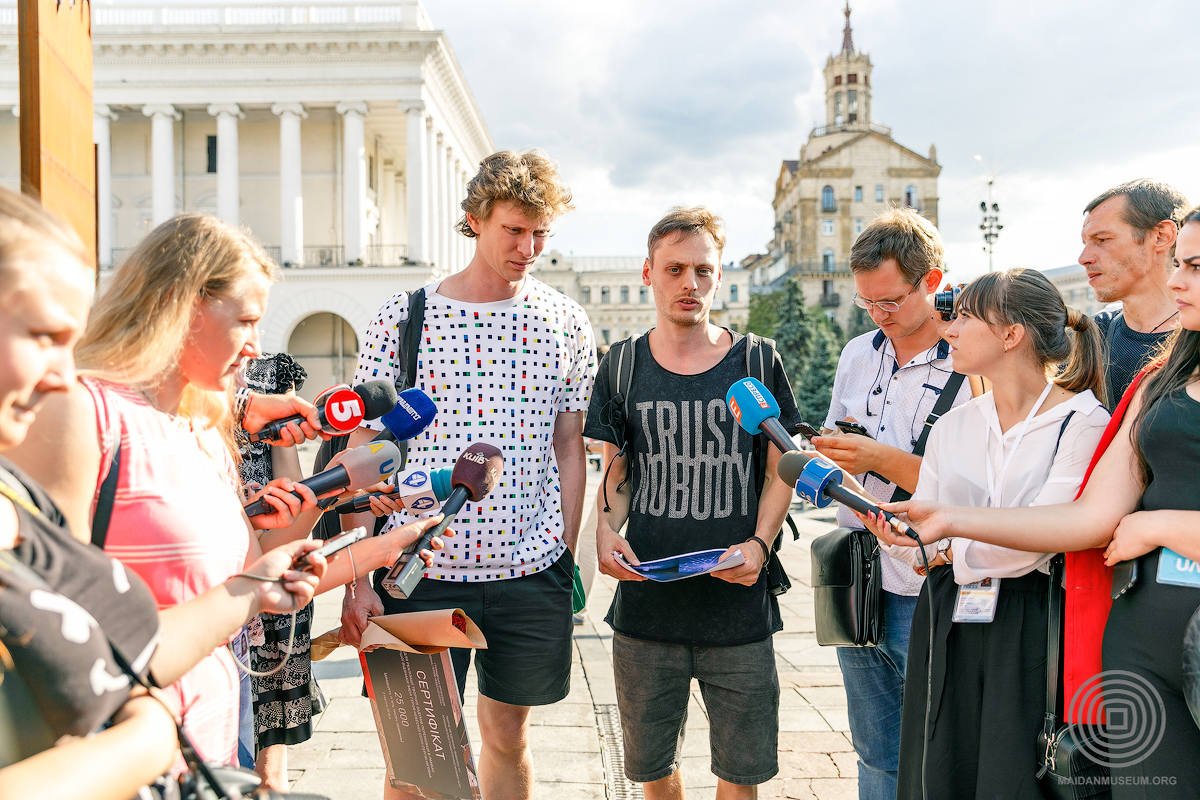Вранці 22 січня центром Києва пройшла хода пам'яті перших загиблих на Революції Гідності. Колона родичів героїв та інших небайдужих громадян рушила Хрещатиком до Європейської площі. Учасники поклали квіти та лампадки до пам'ятних знаків героїв. Цього дня вшановано Сергія Нігояна, Михайла Жизневського, Романа Сеника, Юрія Вербицького, Олександра Бадеру та Богдана Калиняка.
Новини
An artist Oleksandr Bryndikov and the National Museum of the Revolution of Dignity created coloring pages for kids based on the motives of the Nativity scene from Maidan. The coloring pages are dedicated to the Christmas Holidays!
Irish diplomats learned more about the tumultuous events of the Revolution of Dignity, the struggle of Ukrainians for freedom and democracy, the sights of Euromaidan, and the creation of the Museum and Memorial.
Secretary of State at the Chancellery of the President of the Republic of Poland Wojciech Kolarski marked his visit to the National Museum of the Revolution of Dignity – Maidan Museum with the following words, "Historical memory about the Revolution of Dignity is also my personal memory".
We are grateful to people and organizations, public and private companies. To everyone who reposted our greetings and to everyone who wrote their own! To journalists for their interest in our events and to everyone who visited them!
In the late twentieth century, after a wave of ‘velvet revolutions’, historians, political scientists, and sociologists launched discussions on a new type of revolution, or postmodern revolution, characterized by radical changes through negotiations between protesters and authorities. Nonviolent resistance and total people’s mobilization became a defining feature of such revolutions. Further mediatization of society and role of social media, activated at the beginning of the twenty-first century, added the media factor to essential characteristics of the new revolution type. It was mediatization of social reality and emergence of so-called network society that led to the unprecedented influence of social media on development of protest movements for civil rights and freedoms. This was especially typical for post-Soviet countries with not strong democracies and corrupted hybrid regimes, such as Ukraine, Belarus, Georgia, Moldova, Kyrgyzstan, Armenia, as well as for Middle East and North Africa: Tunisia, Egypt, Turkey, Bahrain, Iran, Yemen, Lebanon.
The contract will be signed between the National Museum of the Revolution of Dignity and the German architectural bureau "Kleihies+Kleihues". By signing this contract, "Kleihues+Kleihues" will transfer copyrights for the implementation of an architectural project — the constructions of the National Museum of the Revolution of Dignity on the Alley of Heroes of the Heavenly Hundred in Kyiv.
The President of Lithuania Gitanas Nausėda and his wife Diana Nausėdienė have honored the memory of the fallen peaceful protesters in times of the Revolution of Dignity at the Alley of the Heavenly Hundred Heroes in Kyiv.
On January 27th at 10am (EST), join us as we welcome Ihor Poshyvailo, the General Director of the Maidan Museum on our next "Member Spotlight" to discuss these developments, the museum's dedication to preserving the stories of survivors, and Ukraine's experiences with the fragile nature of democracy and what people can do to defend it.
An interview with Ihor Poshyvailo, director of the National Memorial to the Heavenly Hundred Heroes and Revolution of Dignity Museum (Maidan Museum) in Kyiv. Interviewer: Tomasz Lachowski
National Memorial to the Heavenly Hundred Heroes and Revolution of Dignity Museum initiates the second open expert discussion in the format of the multidisciplinary scientific forum on November 19–20, 2020 in Kyiv, Ukraine. The focus topic of the Forum–2020: “Postmodern Revolutions: the EuroMaidan revolution in the context of global protest movements of the late 20th – early 21st century”. The Forum’s discussion is devoted to research of new types of revolutions, historiography and methodology of protest movements as well as their typological and genetic connections, essential characteristics, causes, timeline, specifics, outcomes and impact, and their terminology including the definition of ‘color/velvet revolution’ in representing such phenomena.
In February 2020 over 200 museum workers from different continents joined symposium in Washington to discuss the topic "Current Approaches to the Conservation of Conflict-Affected Heritage". The symposium was organized by "Smithsonian Cultural Rescue Initiative", "Smithsonian's Museum Conservation Institute", "ICOM Disaster Risk Management Committee" and supported by The Andrew W. Mellon Foundation". Corine Wegener — the director of the Smithsonian Institution Culture Rescue Initiative — briefly explains the goals of the event. "Our mission is to protect cultural heritage threatened or impacted by disasters. And to help the USA and international communities to preserve their identity and history. One way we pursue our mission is to host a research symposium, bringing in scholars and practitioners from around the world to share their work".
"I was going to “National Memorial to the Heavenly Hundred Heroes and Revolution of Dignity Museum-Maidan” voluntarily, but I did not know anything about Ukraine or the museum. Besides this, I had so many questions on my mind: What is memory? What is forgetting? What is the meaning of the “sites of memory”? I gave some answers to myself but I had to think more broadly, and this program was a great opportunity to deepen my thoughts in these fields. Undoubtedly, this journey, like any journey, would lead to new questions while providing some answers. At the end of the day, I was right: I had some answers, but also I had new questions on my mind, too.
From the first moment I started preparations for this journey, I started to make researches about the Maidan demonstrations. I was remembering the protests that started in November 2013 in Kyiv, the capital of Ukraine. Although I could not have enough information due to being in prison at that time, the news of the demolished Lenin statue and the protests made by extreme right-wingers led me to an antipathy. It was the time to question what I know, what I am sure of. And actually I like to do this", – Ufuk Aydın / Volunteer of beraberce Xchange Program: Sites of Memory 2019.
Exhibitions, plays, concerts, movie screening, installations, presentations of books and videos, lectures, sports tournaments, social commercials will be happening soon due to the Day of the Heroes of the Heavenly Hundred of 2019. One extraordinary event is also planned. Results of an all-Ukrainian social survey about the Revolution of the Dignity organized by our museum will be published. We are presenting dozens of events in towns and cities throughout the Ukraine dedicated to the 5th anniversary of the Revolution of Dignity.
Starting from 1978 every two years the prize of the European society of Kudengau-Kalergi was going on a person who made remarkable actions for uniting Europe. This year The Heavenly Hundred was awarded, due to their undescribable heroism and bravery. They all sacrificed their lives on Maidan in the fight for human rights and European values. Ihor Zhaloba, head of the Pan-European association of Ukraine shares worries he had before awarding "Altogether with my European colleagues we were thinking about how to give this award. How will prince Nicolaus von Liechtenstein, as a representer of the whole European society of Kudengau-Kalergi, award the whole Heavenly Hundred? It would be kind of problematic to invite all the families with all the relatives. And that is when we thought about the Museum of Maidan".
‘Revolutionize!’ exhibition opens on November 21st at Mystetskyi Arsenal. It is an international research and exhibition project that brings together art and museum institutions from Ukraine and the Netherlands. 36 contemporary artists and art groups from 15 countries through the language of installation, painting, multimedia, video and photo speak about the revolutionary events, and analyze the revolution as a social phenomenon. A personal, critical, and retrospective view focuses on a special historical event – the Revolution of Dignity. The exhibition also presents artifacts from the National Museum of the Revolution of Dignity collection.
The Museum of the Revolution of Dignity conducted an excursion dedicated to the events of EuroMaydan, for 34 students from the village of Yareski, Poltava region and their mentors from the USA who have been working in Ukraine for a year.
Young people are members of the Summer School for Fellowship at Scholars and Talented Rural Youth, organized by the Fulbright Program together with the Foundation.
The national memorial complex of Heroes of Heavenly Hundreds - the Museum of the Revolution of Dignity and the architectural bureau "Kleihues + Kleihues Gesellschaft von Architekten mbH" - the winner of the contest announce the search for the general designer for the museum building.
The youngest artist Georgy Potopalsky and the "SVITER art-group" formation became the winners of the creative competition for the award of the name of Sergey Nigoyan. They got the funds for the implementation of the art installation.

